Another collective noun – today, as promised, coming back to that skipped H – a Hedge of Herons. An interesting thing about collective nouns is that there are often a bunch of different ones for the same creature. You can say “a hedge of herons”, or “a scattering of herons”, or “a siege of herons” or even “a sedge of herons”. You can also use standard collective nouns for birds like “rookery” or “flock”. The tricky part is that quite often specific collective terms apply to the creatures in a particular grouping – as in an erst of bees, which only applies to the first or prime swarm when bees leave their hive in the process of establishing a new colony. Not having been able to find much in the way of details on this one, I can only hope that I depicted a “hedge” of herons correctly. The herons I chose to draw are great blue herons, which are common across North & Central America.

A couple of days ago I wrote about the photographer Robert Polidori, and mentioned that to some extent his work resonates with me because I also take photos of abandoned places. I first started taking photos in abandoned places in the late 80’s, in and around Hamilton, Ontario, a declining industrial city with literally hundreds of acres of amazing industrial spaces in disuse – kind like Pittsburgh, but with less charm. When I moved to Montreal, I was pleased to find that there was a wealth of abandoned factories to explore and photograph – in fact, some of the first factories in North America, easily acessible. I wasn’t aware at the time that this kind of exploring was a thing anyone else was interested in, though with the advent of the internet I have become quite aware of the international urban exploration community.
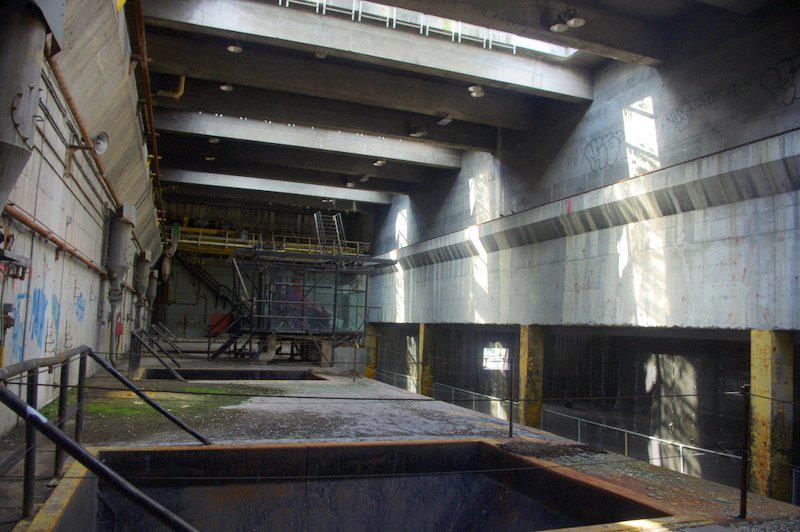
Ian Rogers – Derelict Incinerator Loading Bays – Montreal
As I said in my earlier post:
I like to go into abandoned buildings and look around, especially old factories and commercial buildings, often taking photos. What I find most inspiring about these places is not so much the decay, but the traces of life. Every time I am in an abandoned space, I like to imagine what it was like when occupied; the people moving and talking, the sounds and colours of a busy workspace or public space. There’s a kind of weightiness to realizing how people used these spaces day after day, year after year – and now they are no longer “for” anything, they simply “are”.

Ian Rogers – Derelict Incinerator Rooftop – Montreal
I take my cue in this sense from the Japanese photographer Yuji Saiga. As he wrote about the famous Gunkanjima site in Japan that he photographed extensively:
Order and value that only prevailed through human existence had long been disrupted. Items were scattered here and there with no context, no ranking. Everything had equal value. The sight I saw spoke of the relationship of the master and servant that had vanished at the time these items were discarded, which liberated them from human reign. To be abandoned meant freedom from all. The items left behind on the island lost their names, their given tasks, even the meaning of their existence. The laid there as mere “objects”. Books and clocks and empty bottles were no longer books and clocks and empty bottles,. Things that had been domesticated by humans no longer existed on the island. Just as the inhabitants started their new lives by leaving the island, these things too, left behind on the island, shed their identity once forced on by humans, to start their lives as “pure objects”.

Ian Rogers – Derelict Incinerator Control Room – Montreal
I don’t limit myself to factories and industrial spaces; there is a poetry to be found in abandoned houses & apartment buildings, abandoned hotels, abandoned… well, everything. Even when I travel I take the opportunities to explore as I find them. Like the family vacation to Cuba last fall, where there was an abandoned resort and an abandoned polytechnic school adjacent to the resort we were staying at.

Ian Rogers – Derelict Resort Bungalow- Santiago de Cuba
This resort actually looked like it was nicer than the one I was staying at, in its heyday. How many thousands of tourists passed through these spaces, enjoying their tropical getaway? You can almost hear the echoes of laughter from the poolside bar instead of the wind blowing through the overgrown decorative plants and dry, tall grasses of the untended lawns.
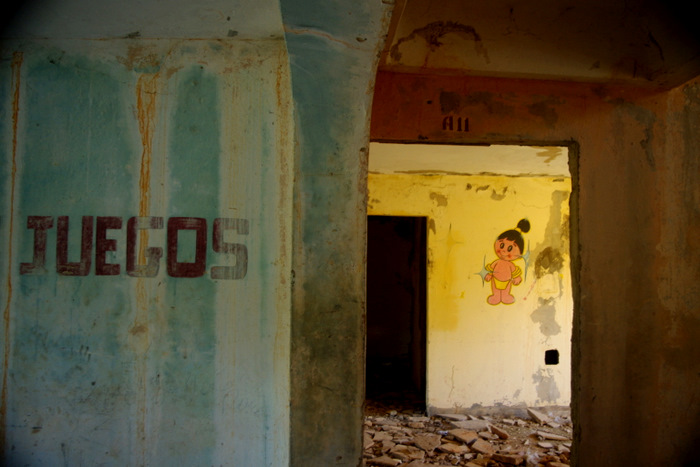
Ian Rogers – Derelict Polytechnic School Games Room – Santiago de Cuba
Then, there was the abandoned polytechnic school. How many hundreds upon hundreds of children played in this room? Now that the room is no longer “for children to play in” but is simply a space-unto-itself, the textures and colours take on a life of their own, and the quiet whisper of damp breezes from the stairwells and the buzz of cicadas are the only sounds. It gives pause for thought.
You can see a full set of the incinerator photos here, or view a full set of the Cuban resort & school photos here.
Another collective noun – today, an Implausibility of Gnus. A bit out of order as I should have done H today, but I will circle back to H for the next installment. There is something improbable about the gnu, also known as the wildebeest. It is the largest of the antelope family, for one – people usually imagine antelopes as small and graceful animals, so there is something definitely implausible about thinking of vast herds of these gigantic beasts thundering across the veldt as antelopes. Then there’s that sad, long face. I suppose the life of a prey animal in Africa isn’t easy, but you don’t see impalas getting all doleful about it.
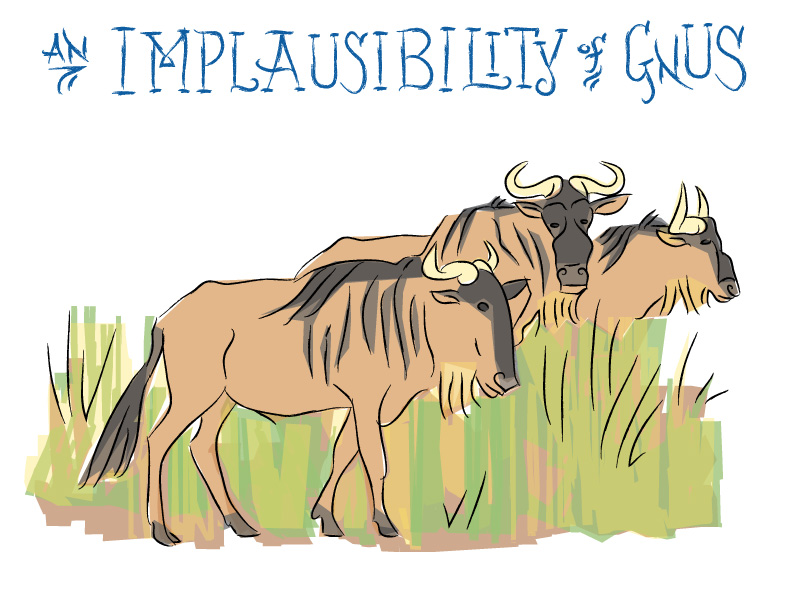
The Wildebeest
Let us say a few words, at least,
in praise of the hardy wildebeest.
Instead of one name, they have two:
the oldest ‘beest is always gnu.
– Ogden Nash
Robert Polidori is an American photographer born in Montreal, Canada, who lives between Paris and New York. He’s been a staff photographer for the New Yorker for more than a decade, and has won a heckload of awards including a couple of Eisenstadts & a World Press Award. He’s also a big force in fine art photography. His work centres around themes of the constructed world like Place Versailles between art installations or major construction projects in China, but also, slums, war zones, ruins, and disasters in places like Havana, post-Katrina New Orleans, Beirut, Pripyat & Chernobyl. Pretty heady stuff to say the least.
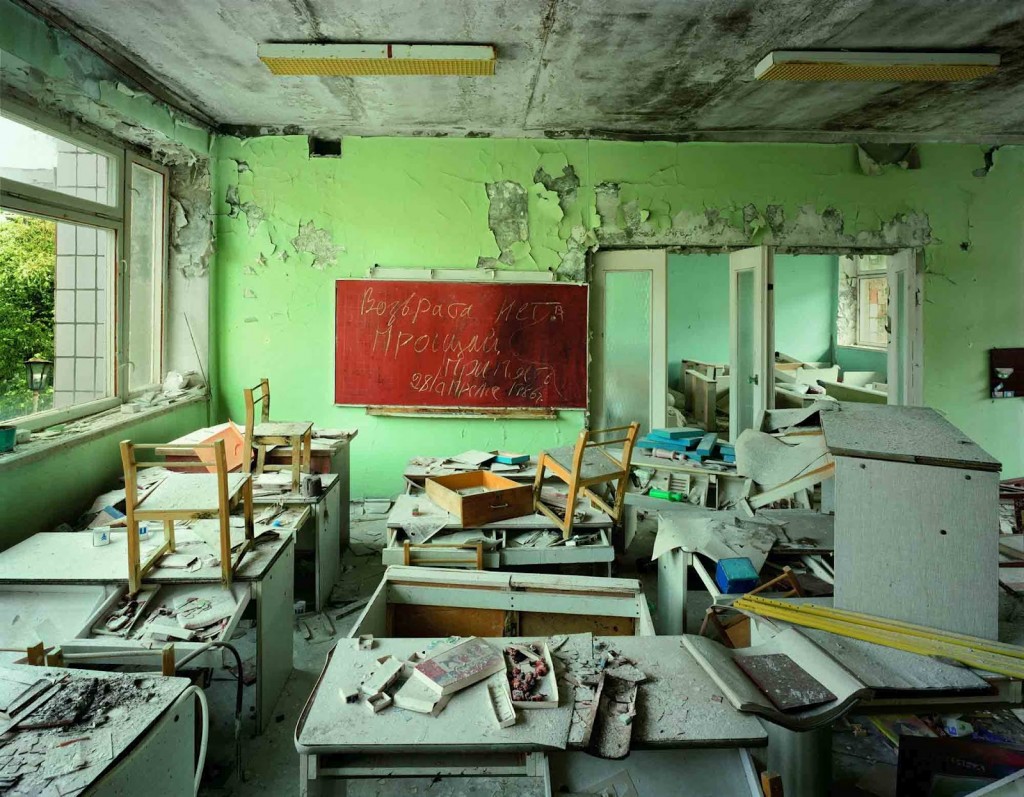
In particular I really enjoy his 2003 series from Pripyat and Chernobyl. Since the nuclear disaster of 1986, there have been many photographers who have heeded the urge to visit and document this city in ruins. Most take a fairly stolid memento mori approach, which Polidori also addresses, but there is an additional richness to his photos that mere documentary photographers miss. Polidori’s photos are stage sets for an apocalypse – but more than that, they are impeccably composed, perfectly lit eye-candy. The juxtaposition of the lush beauty of Polidori’s photographic technique with these scenes of devastation lends dramatic weightiness to the simple facts; you can’t just look at these images casually, you have to gape in awe. Worth noting, these photos were displayed in a gallery setting as quite large prints, most around 3×4′. I had the good fortune to see them as part of an exhibition at Montreal’s Musée d’Art Contemporain a couple of years back and I was blown away.

To a fairly large extent his work is perceived as morbid, but I don’t buy into that point of view. I like to go into abandoned buildings and look around, especially old factories and commercial buildings, often taking photos. What I find most inspiring about these places is not so much the decay, but the traces of life. Every time I am in an abandoned space, I like to imagine what it was like when occupied; the people moving and talking, the sounds and colours of a busy workspace or public space. There’s a kind of weightiness to realizing how people used these spaces day after day, year after year – and now they are no longer “for” anything, they simply “are”. I get it. I’m no Robert Polidori, but I took these photos on a visit to Cuba, for example. Of course my own attitudes and experience colour my interpretation of Polidoris’ work but that’s also why it resonates with me so strongly.
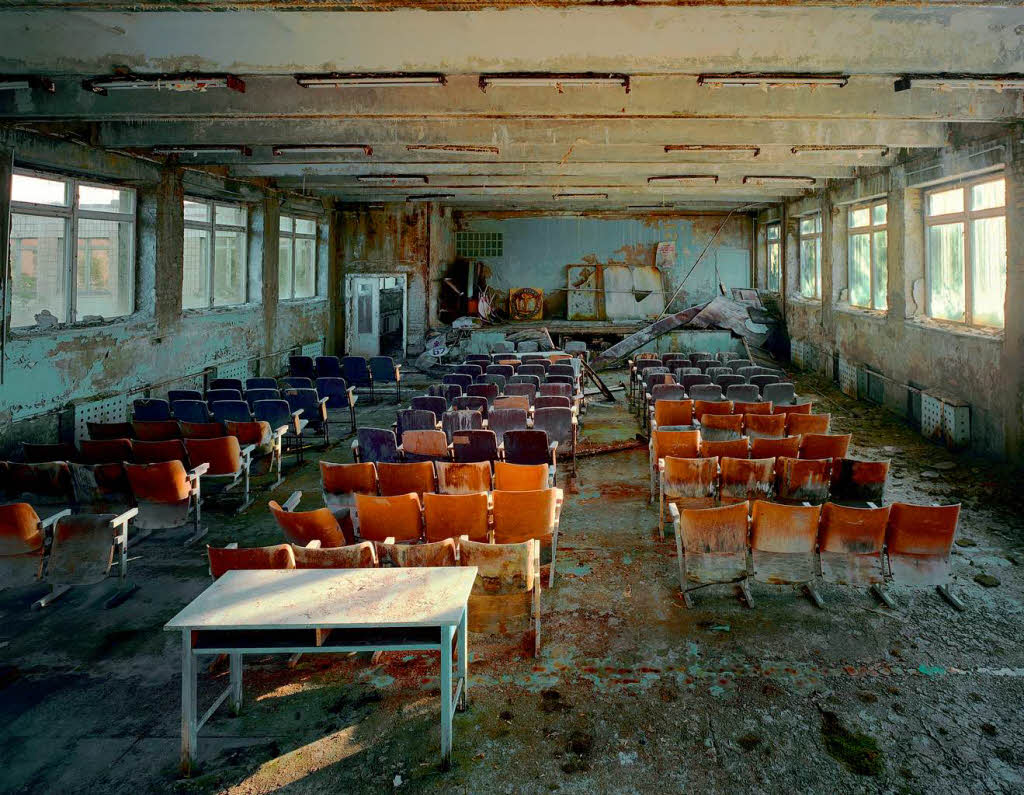
Polidori’s Chernobyl series can be purchased in book form via Amazon (Zones of Exclusion: Pripyat and Chernobyl). More of his photography can be seen via Edwin Houk Gallery.

Another collective noun – today, a Gatling of Woodpeckers. I hadn’t really thought about it before but the sound of a woodpecker’s TOK TOK TOK TOK TOK TOK TOK TOK does kind of sound like one of those old-fashioned hand-crank machine guns. I used to associate the sound of woodpeckers with quiet walks through the forest, but now I will think of 19th century warfare. Ah well.
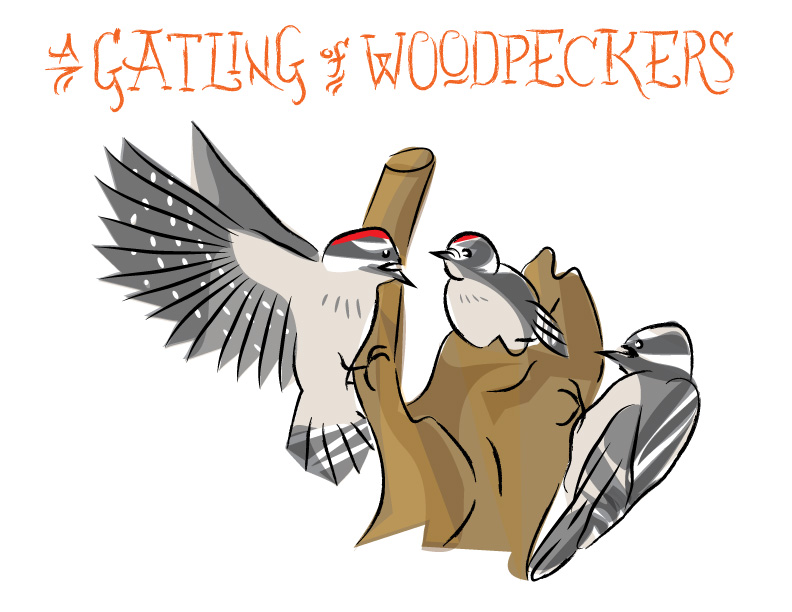
I decided to draw downy woodpeckers, not only because I enjoy their markings, but because they have the distinction of being the smallest of the woodpecker family, and I do enjoy extremes.


